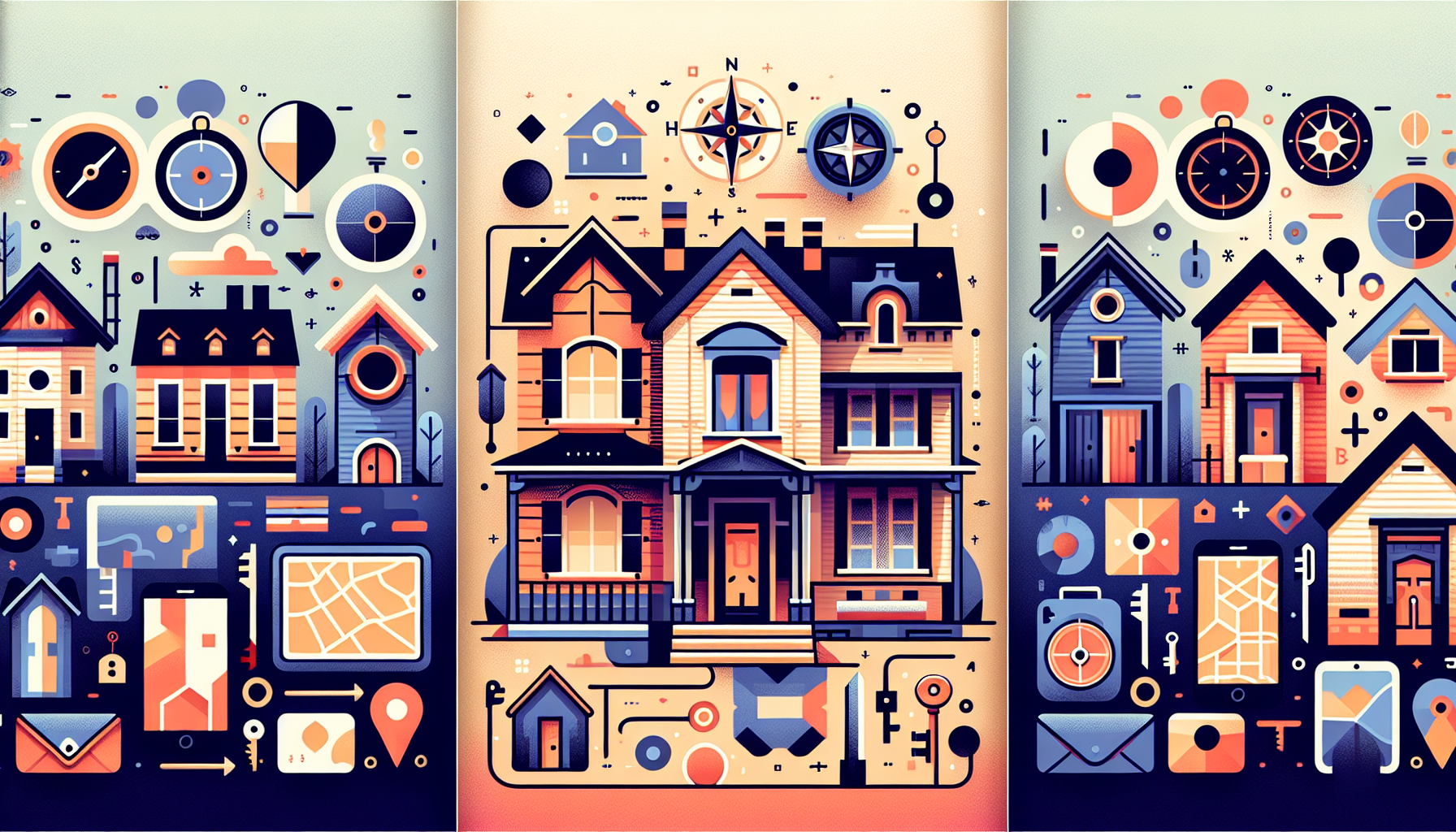Navigating Mortgages for Unique Properties

When it comes to financing unique properties like log homes or earth homes, navigating the mortgage landscape can be challenging. These non-traditional constructions often require specialized financing options that differ from conventional home loans. In this article, we'll delve into the world of log home financing, earth home mortgages, and non-traditional construction loans, providing you with the insights needed to secure your dream home.
Understanding Log Home Financing
Financing a log home is similar to financing any other newly built home, with a few extra considerations. One of the most common methods is using a construction loan, which covers the costs during the building process. This loan is later replaced by a permanent mortgage once the home is completed. For instance, U.S. Log & Timber offers guidance on how to navigate this process, emphasizing the importance of detailed plans and a contract with a builder.
Construction Loans for Log Homes
A construction loan is essential for building a log home from the ground up. It typically involves two phases: the construction phase and the permanent phase. During the construction phase, payments are often interest-only, and once the home is built, the loan transitions into a fully amortizing mortgage. This process can be streamlined with a construction-to-permanent loan, which combines both phases into one loan, reducing closing costs and the need for multiple applications. Companies like MIDFLORIDA Credit Union offer such loans, making the process more efficient.
Log Home Mortgages
Log home mortgages are generally similar to conventional mortgages but may require additional considerations due to the unique nature of the property. Lenders often prefer borrowers with a significant amount of equity, typically 20% or more of the home's total cost. However, some lenders may offer more flexible terms, especially for government-backed loans like FHA or VA loans. For example, Build Buy Refi offers specialized financing solutions for log and timber homes, including VA loans with up to 100% financing for eligible veterans.
Exploring Earth Home Mortgages
Earth homes, also known as earth-sheltered homes, present another unique challenge in the mortgage market. These homes are built into the ground, providing natural insulation and energy efficiency. However, their unconventional design can make it difficult to secure traditional financing. Earth home owners often need to work with lenders who specialize in non-traditional properties or consider alternative financing options like private loans or community-based financing initiatives.
Challenges in Earth Home Financing
The primary challenge in financing earth homes is their appraisal value. Since these homes are built into the ground, their value can be harder to assess compared to traditional homes. Additionally, the construction process may require specialized knowledge and materials, increasing costs. Despite these challenges, earth homes offer significant long-term benefits, including reduced energy costs and a unique living experience.
Non-Traditional Construction Loans
Non-traditional construction loans encompass a wide range of financing options for unique properties, including log homes, earth homes, and other unconventional structures. These loans often require creative financing solutions, such as combining construction and permanent financing into a single loan or using government-backed programs that offer more favorable terms.
Renovation vs. Construction Loans
While construction loans are designed for building new homes, renovation loans are used for upgrading existing properties. Renovation loans can be particularly useful for transforming an existing structure into a unique home, such as converting a barn into a living space. MIDFLORIDA Credit Union provides insights into the differences between these loan types, helping borrowers choose the right option for their needs.
Government-Backed Loans
Government-backed loans, such as FHA, VA, and USDA loans, can offer more favorable terms for non-traditional properties. These loans often require lower down payments and may have more lenient credit score requirements. For example, Build Buy Refi offers VA log home loans with up to 100% financing, making it easier for eligible veterans to secure their dream log home.
Strategies for Securing Financing
Securing financing for unique properties requires a strategic approach. Here are some strategies to consider:
- Use Home Equity Loans: If you already own a home, using a home equity loan can be a viable option for financing a log cabin or earth home. This method allows you to leverage the equity in your current property to secure funds. Companies like Zook Cabins recommend this approach for many of their customers.
- Explore Government-Backed Loans: Government-backed loans can provide more favorable terms, such as lower down payments and better interest rates. These loans are particularly beneficial for veterans and rural residents.
- Consider Private Financing: For properties that are truly unique or hard to appraise, private financing might be necessary. This could involve working with private lenders or community-based initiatives.
- Work with Specialized Lenders: Companies like Build Buy Refi specialize in log and timber home financing, offering tailored solutions that conventional lenders might not provide.
Calculating Your Mortgage Options
When exploring financing options for your unique property, it's essential to calculate your mortgage costs accurately. Tools like the WP Ultimate Loan & Mortgage Calculator can help you compare different loan scenarios and understand the implications of various financing options. This calculator allows you to input specific details about your loan, such as the loan amount, interest rate, and term, to get a clear picture of your monthly payments and total costs.
Using Mortgage Calculators Effectively
Using a mortgage calculator effectively involves considering several factors:
- Loan Amount: Determine how much you need to borrow based on the purchase price of your property and any additional costs.
- Interest Rate: Research current interest rates and consider how they might impact your monthly payments.
- Loan Term: Decide on the length of your loan, balancing between lower monthly payments with longer terms and higher payments with shorter terms.
- Additional Costs: Factor in any additional costs, such as insurance and property taxes, which can affect your overall mortgage expenses.
Conclusion and Next Steps
Financing unique properties like log homes and earth homes requires careful planning and a deep understanding of the available financing options. By exploring construction loans, government-backed loans, and alternative financing strategies, you can secure the funding needed to turn your dream into a reality. For personalized advice and to explore your financing options further, consider reaching out to our team via the Contact Us page. Whether you're building a new log home or transforming an existing structure, the right financing strategy can make all the difference.
As you navigate the complex world of non-traditional construction loans, remember that specialized lenders and tools like mortgage calculators can be invaluable resources. By leveraging these resources and staying informed about the latest financing options, you'll be better equipped to find the perfect mortgage for your unique property.











